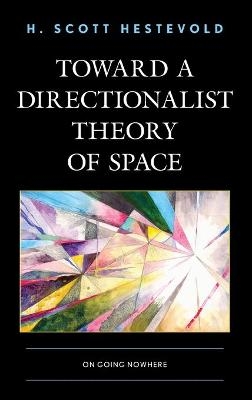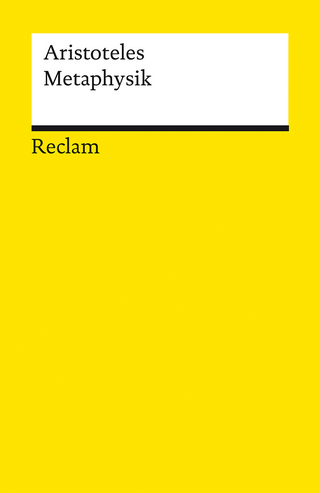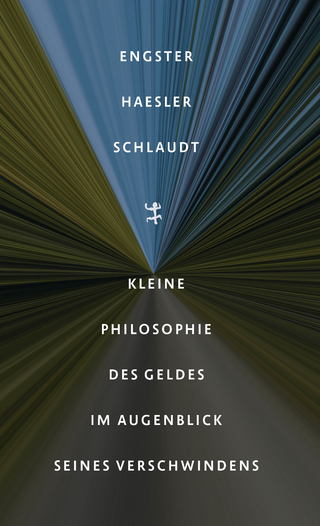
Toward a Directionalist Theory of Space
On Going Nowhere
Seiten
2020
Lexington Books (Verlag)
978-1-4985-7996-4 (ISBN)
Lexington Books (Verlag)
978-1-4985-7996-4 (ISBN)
Arguing that the universe is absolutely directioned and that there exist spatial (directional) relations that Leibniz overlooked, H. Scott Hestevold formulates a new relationalist theory of space, exploring its implications for the Special Composition Question, reductivism regarding boundaries and holes, and the nature of spacetime.
In Toward a Directionalist Theory of Space: On Going Nowhere, H. Scott Hestevold formulates a new relationalist theory of space by appealing to the view that the universe is directioned and that there thereby exist spatial relations that Leibniz overlooked—directional relations such that specific directional relations would obtain between any two objects. This directionalist/relationalist theory would allow the reduction of space-implying claims to claims about objects and the directional relations they exhibit, and it would also preserve absolutist intuitions that motivate standard arguments for substantivalist space:intuitions involving, for example, absolute motion and the possibility that all objects are moving uniformly.
Extending the directionalist/relationalist theory of space to the Special Composition Question, Hestevold addresses the problem of when discrete objects compose a whole. He also uses the directionalist/relationalist theory to formulate reductivist theories of boundaries and holes—theories that may allow one to resist the view that boundaries and holes are ontologically parasitic entities. Finally, he explores directionalism/relationalism vis-à-vis spacetime, addressing questions such as whether the findings of modern physics provide adequate evidence that substantivalist spacetime exists; what problems underlie the dispute between spacetime substantivalists and relationalists; and in light of evidence for substantivalist spacetime, what ontological benefit follows from an endorsement of spacetime directional relations?
In Toward a Directionalist Theory of Space: On Going Nowhere, H. Scott Hestevold formulates a new relationalist theory of space by appealing to the view that the universe is directioned and that there thereby exist spatial relations that Leibniz overlooked—directional relations such that specific directional relations would obtain between any two objects. This directionalist/relationalist theory would allow the reduction of space-implying claims to claims about objects and the directional relations they exhibit, and it would also preserve absolutist intuitions that motivate standard arguments for substantivalist space:intuitions involving, for example, absolute motion and the possibility that all objects are moving uniformly.
Extending the directionalist/relationalist theory of space to the Special Composition Question, Hestevold addresses the problem of when discrete objects compose a whole. He also uses the directionalist/relationalist theory to formulate reductivist theories of boundaries and holes—theories that may allow one to resist the view that boundaries and holes are ontologically parasitic entities. Finally, he explores directionalism/relationalism vis-à-vis spacetime, addressing questions such as whether the findings of modern physics provide adequate evidence that substantivalist spacetime exists; what problems underlie the dispute between spacetime substantivalists and relationalists; and in light of evidence for substantivalist spacetime, what ontological benefit follows from an endorsement of spacetime directional relations?
H. Scott Hestevold is professor emeritus of philosophy at The University of Alabama.
PrefaceChapter 1: The Map to Nowhere and Beyond
Chapter 2: Spatial Directionalism
Chapter 3: A Directionalist Theory of Space
Chapter 4: Defending Spacelessness
Chapter 5: The Special Composition Question Revisited
Chapter 6: Is the Road to Nowhere Without Boundaries and Holes?
Chapter 7: Is Modern Physics a Roadblock to Going Nowhere?
Bibliography
| Erscheinungsdatum | 10.05.2021 |
|---|---|
| Reihe/Serie | Toposophia: Thinking Place/Making Space |
| Verlagsort | Lanham, MD |
| Sprache | englisch |
| Maße | 162 x 240 mm |
| Gewicht | 485 g |
| Themenwelt | Geisteswissenschaften ► Philosophie ► Metaphysik / Ontologie |
| Naturwissenschaften ► Physik / Astronomie | |
| ISBN-10 | 1-4985-7996-5 / 1498579965 |
| ISBN-13 | 978-1-4985-7996-4 / 9781498579964 |
| Zustand | Neuware |
| Haben Sie eine Frage zum Produkt? |
Mehr entdecken
aus dem Bereich
aus dem Bereich
Buch | Hardcover (2024)
Matthes & Seitz (Verlag)
28,00 €


